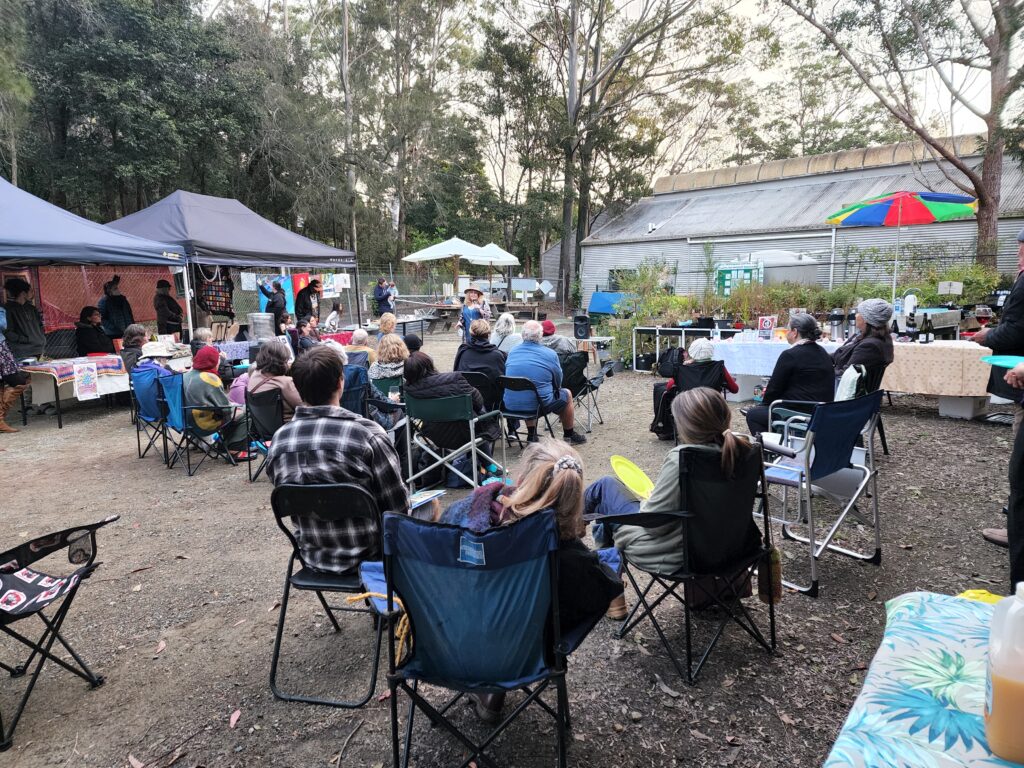Tomorrow, Thursday, 22nd June is the shortest day of the year – the Winter Solstice – and the Community Environment Network (CEN) has decided that is a great reason to invite the community to celebrate culture, the stars and the seasons whilst immersing ourselves in nature.

By Jacquelene Pearson
Winter Solstice 2022 was the first time the Community Environment Network invited its members and supporters to spend an afternoon in its Wildplant Nursery at Ourimbah to mark the Winter Solstice.
The event was deemed such a success that it is being held again this Friday, June 23. Gates open at 3:30pm for a 4:00pm start and this year’s ticket price is only $10 for CEN members and $15 for non-members.
The ticket price includes wine and cheese (this is an over-18s event). The weather is expected to be fine which could mean a sunset as spectacular as last year’s.
Wine and cheese will again be provided in ticket price. The CEN team will be selling raffle tickets with some excellent prizes and local artists and crafters have been invited to set up stalls and sell their wares (EFTPOS available).
Paul Craig will be performing the the Welcome to Country and will give a short talk on the significance of the stars and moon to the Guringai people.
I am chuffed to be invited to read some poems from my first collection, Mother’s Song, at this year’s solstice along with making some remarks about the importance of independent journalism in the coverage of environmental and social justice news.
Dr Robert Fuller (Bob) is this year’s keynote speaker. He is a late returnee to academia after a 45-year break for a career in first, the military, and then, industry.
He was tertiary educated as an anthropologist/archaeologist, and much later, after retiring, did a research MPhil at Macquarie University, Sydney, on Indigenous astronomy, publishing on the cultural astronomy of the Kamilaroi and Euahlayi peoples of New South Wales.
He has now completed a PhD at the School of Humanities and Languages, University of NSW, researching the cultural astronomy and songlines of the saltwater Aboriginal peoples of the New South Wales Coast, under the supervision of Duane Hamacher (University of Melbourne) and Dan Robinson (University of NSW).
He has been active in outreach to the non-Indigenous community through lectures and non-academic articles and was the instigator of the successful documentary on Euahlayi astronomy, “Star Stories of the Dreaming”.
He is now an Adjunct Fellow at the School of Science, Western Sydney University, working with Dr Ray Norris, astrophysicist and early Australian cultural astronomer.
Bob Fuller’s presentation should be fabulous.
The whole CEN team will be available to have a chat about all the valuable work they do for the environment and sustainability.
So what is the significance of the Winter Solstice?
The Australian Geographic Magazine has just published an excellent explanation.
“Put simply, the winter solstice is the shortest day (and longest night) of the year but there is a lot more to it than that,” Australian Geographic explains.
“The winter solstice marks the moment the Earth’s South Pole reaches its furthest tilt away from the sun.
“During the southern Hemisphere’s June, or winter, solstice, the sun appears at its lowest point in the sky, marking the shortest day of the year and the longest night,” explains astronomy expert Glenn Dawes.
“During the solstice, Earth’s Southern Hemisphere is tilted away from the sun, while at the same time in the Northern Hemisphere it is tilted towards it, resulting in the longest day of the year there.
“The word ‘solstice’ comes from the Latin sol (sun) and sister (to stand still) because the sun was believed to stand still for a moment before changing direction.”
According to Australian Geographic the solstice occurs in the Southern Hemisphere between June 21 and 23. Days then start to become longer and nights shorter until the summer solstice which is the longest day and shortest night of the year between 21 and 23 December.
“The winter solstice has long been celebrated worldwide, with different cultures and religions partaking in various traditions, rituals and festivals,” the magazine article said.
There is certainly plenty worth celebrating about nature on the Central Coast. See you at the winter solstice.
Tickets to the CEN Wildplant Nursery Winter Solstice celebration are available via their website
DON’T FORGET TO BRING YOUR FOLD UP CHAIR and CASH for raffle and stalls


